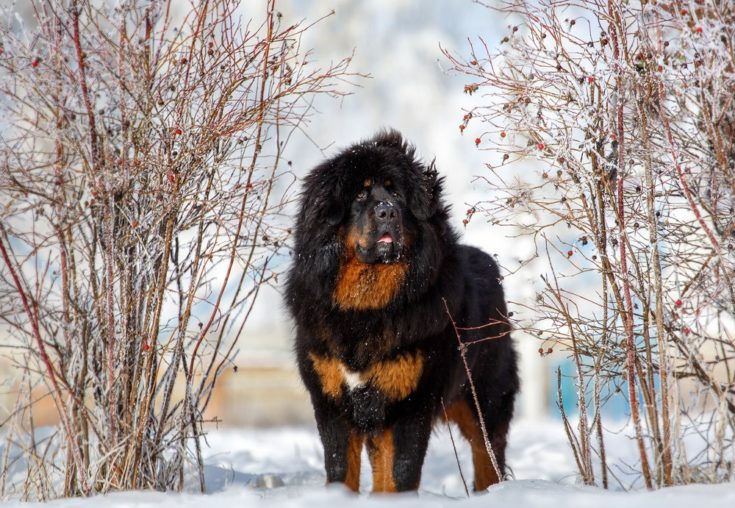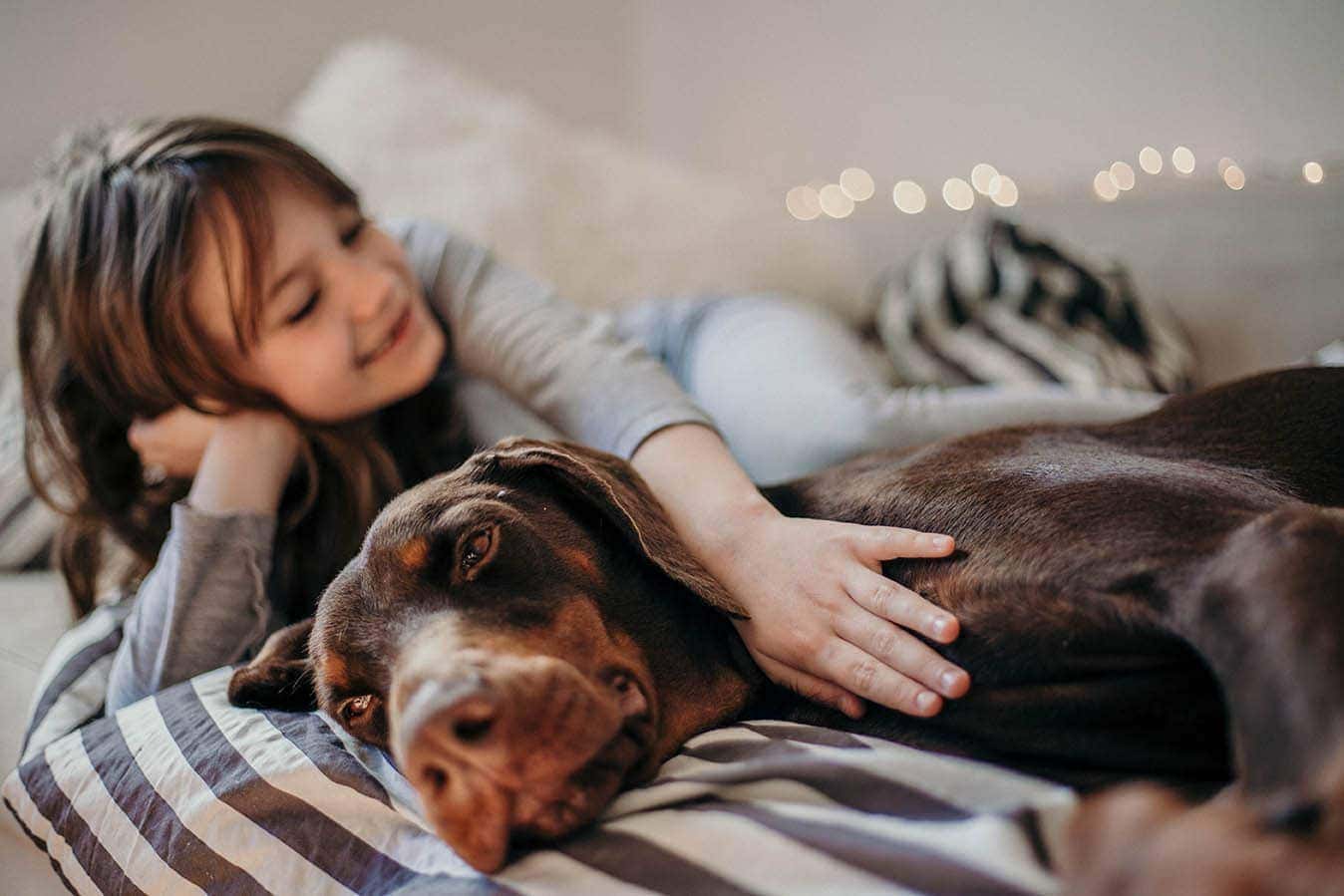Tibetan Mastiff vs. Caucasian Shepherd: What’s the Difference?

Updated on

Click to Skip Ahead
Both the Tibetan Mastiff and the Caucasian Shepherd are ancient breeds with histories that go back thousands of years. The former got its start in the Himalayas, although the exact origins are lost to time. The latter also resided in rugged terrain, with their homeland in the Caucasus Mountains of Turkey and the surrounding area.
These dogs have a commanding presence, if just because of their size. It was a point in their favor, given the like roles. They also have similar personalities. However, there are some significant differences between the two. Which breed is right for you? Let’s do a deep dive to help you make an informed choice.
Visual Differences

A Quick Overview
- Average Height (Adult): 24–26 inches
- Average Weight (Adult): 70–150 pounds
- Lifespan: 10–12 years
- Exercise: 1+ hours/day
- Grooming Needs: Moderate
- Family-Friendly: Yes
- Dog-Friendly: Yes
- Trainability: Independent, sometimes challenging
- Average Height (Adult): 23-30 inches
- Average Weight (Adult): 99-170 pounds
- Lifespan: 11-12 years
- Exercise: 1+ hours/day
- Grooming Needs: Moderate
- Family-Friendly: Somewhat reserved
- Dog-Friendly: Only with early socialization
- Trainability: Independent, sometimes challenging
Tibetan Mastiff Overview

The Tibetan Mastiff resembles a cross between a Saint Bernard and a Mastiff with a Chow Chow thrown in the mix, too. While this is a giant breed, the Caucasian Shepherd has a slight edge on weight. This pup has a thick double coat. It makes sense, given their probable origins. Their main jobs were guarding livestock and their owners. Records of an early ancestor go back to 1100 BC in China.
This pup faced some formidable enemies, including snow leopards. However, much of their history is unknown, given the harsh environment and remote country. Westerners didn’t learn about the existence of these dogs until well into the mid-20th century. However, they’ve held onto their hardworking attitude. This is a pooch that likes having a job, even if it’s just playing catch.
Personality
Like many herding and guardian dogs, the Tibetan Mastiff has an independent streak that comes from being alone in the field. This isn’t a shy animal, but they are often reserved. As a watchdog, they’re protective and even sometimes territorial. This pup is also wary of new people, which is a common trait of dogs related to the Spitz breeds.
The Tibetan Mastiff takes their job of protecting the home seriously. They’re a loyal pet and will forge strong bonds with the family members. This pup isn’t the most affectionate companion, but you’ll know that you’re in safe hands with this pooch in your home. Surprisingly, they dislike conflict in their world. They’re sensitive dogs that prefers the company of their family.
Another trait worth noting is the Tibetan Mastiff’s tolerance of children, especially if they grow up together. The same thing applies to other pets in the home. However, the key to success is always early socialization, especially when it comes to meeting new people.

Training
The Tibetan Mastiff is quite intelligent. It was something they needed to stay alert for threats to the livestock in their charge. However, they’re also willful dosg. That’s one reason why it’s imperative to start training early. This pup does best with positive reinforcement. Stern reprimands are not appropriate for a pet as sensitive as this one.
We suggest using treats as training aids to kickstart your pup’s lessons. However, it’s essential to keep them just for this purpose. Unfortunately, the Tibetan Mastiff has a tendency to gain weight. The other point to remember is consistency. It’s standard advice when you’re dealing with a dog as intelligent as this one. They need guidance and a good reason to obey you.
Health and Care
Like many large breeds, the Tibetan Mastiff is susceptible to joint and skeletal conditions, such as hip and elbow dysplasia. Therefore, it’s imperative to only buy from reputable sellers who undergo the recommended pre-breeding health screenings. The rarity of the breed is a point in this pup’s favor since it’ll lessen the risk of overbreeding.
This pup is also prone to some eye disorders and hypothyroidism. Otherwise, the Tibetan Mastiff is a relatively healthy breed. We strongly urge you to check their eyes and ears as part of your grooming routine for signs of infections or irritation. Regular grooming is also a part of your pet’s health care. It’s also another way to bond with your dog.
Suitable For:
This dog is best for individuals or families who have the time and energy to devote to their Tibetan Mastiff. They have a moderate prey drive and will generally stay close to home. However, early training is vital to prevent them from developing a bad habit like nipping. It’s also critical to provide mental stimulation for your pet, especially one as big as this breed.
Caucasian Shepherd Overview

The Caucasian Shepherd looks similar to the Tibetan Mastiff with a kinder, gentler-appearing face. They even seem like they have some Great Pyrenees in them. Like the previous dog, this pup also worked as a guardian for livestock and all-around watchdog. Enthusiasts selectively breed them to develop into the muscular and athletic dogs that they are.
The Caucasian Shepherd’s history includes work with the army, both the Armenian Tsar Tigran in ancient times and the USSR as late as the 1920s. Their background has given this pup the confidence and fearless nature that they have today. They’re laidback pets that aren’t as energetic as some herding dogs. However, they do have strong prey drives, probably a result of the breed’s early life.
Personality
The Caucasian Shepherd shares many of the same qualities as the Tibetan Mastiff. They’re loyal pets that will defend their family and territory to the hilt. Their size gives them the brawn to back up any challenge. They aren’t overly sensitive and are moderately tolerant of being alone, as long as it doesn’t happen frequently. They develop strong bonds with their human companion but are wary of strangers.
The Caucasian Shepherd is happiest when getting regular exercise outdoors. This pup is independent, which is a common trait among dogs of this type. They’re also always on guard. Unfortunately, they sometimes becomes vocal because of it. It’s a bad habit you’ll have to control early and gently. They’re quite intelligent and occasionally bold. Both are products of their guardian/watchdog past.
Training
We strongly urge you to take the lead on training right from the start, given the size of the adult Caucasian Shepherd. Again, positive reinforcement is the best plan of action to gain their trust and get the results that you want. Consistency is essential when dealing with a smart dog like this. They sometimes makes training a challenge because of their stubborn streak. Treats will work wonders.
Regular exercise is vital for the physical and mental health of the Caucasian Shepherd. They need new activities and things to do to stay engaged. Remember that a bored pooch is a destructive one. With a dog this size, that could spell disaster. Their territorial nature is another thing you must watch. We suggest that you teach your children to respect your pet’s space.

Health and Care
The Caucasian Shepherd is a relatively healthy breed, thanks in part to their rarity. They’re susceptible to the skeletal and joint issues of other large dogs, including degenerative myelopathy. Therefore, it’s vital to only purchase puppies from reputable sellers who conduct the recommended tests as advised by the Orthopedic Foundation for Animals (OFA). We recommend requesting this info before buying a pup.
Another concern with the Caucasian Shepherd is obesity. While they’re somewhat active, monitoring their diet is an excellent way to ensure that they stay fit and trim. Regular grooming is also essential. You should plan on brushing them a couple of times a week to prevent mats in their thick coats. Check their eyes and ears frequently for signs of infection.
Suitable For:
Like all large dogs, the Caucasian Shepherd will do best in a home where someone can spend the necessary time on training to make them an obedient pet. While intelligent, this pup isn’t the best choice for the first-time dog owner. Their independence and size require someone with experience in handling animals like this one. Mental stimulation is imperative to keep them mentally healthy.
Which Breed Is Right for You?
The one thing that both the Tibetan Mastiff and Caucasian Shepherd have in common is their large size. A male of either breed can tip the scales at over 100 pounds. Interestingly, the two sexes are markedly different in stature. That’s not unusual for guardians and watchdogs as both of these pups were historically. It’s essential to bear that factor in mind, considering obedience training.
Puppies of either breed are expensive, with prices starting at least $2,000. You’ll likely pay more for a pup with a respectable pedigree. The American Kennel Club recognized the Tibetan Mastiff in 2006 as part of the Working Group. The Caucasian Shepherd has yet to gain that status. This dog remains in the Foundation Stock Service ranks on the path to certification.
The Tibetan Mastiff is the more active of the two breeds. They also have more playful natures. Both dogs will make excellent and loyal watchdogs with the proper training. While the Caucasian Shepherd is the less sensitive pet, a positive approach works best with either one. In return, you’ll get the reward of having a pup that will always be there for you, no matter what the threat.
Featured Image Credit: (L) Marina Plevako, Shutterstock | (R) Aleksandra Saveljeva, Shutterstock











